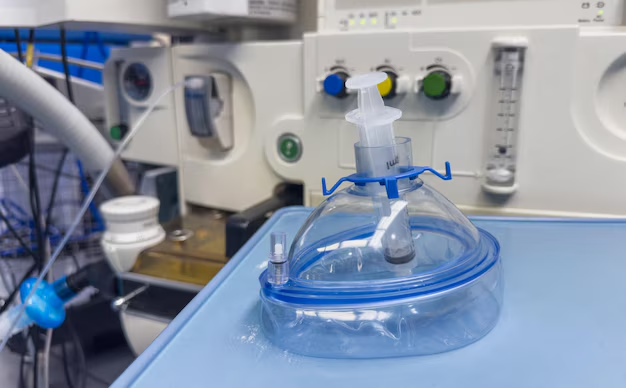Understanding Pulmonary Hypertension: Navigating Towards Better Management
Pulmonary hypertension is a daunting diagnosis that can leave individuals feeling overwhelmed and anxious about the road ahead. However, understanding what this condition entails, along with potential management strategies, can empower patients and their loved ones. Let's delve into what pulmonary hypertension is, the causes, and the lifestyle adjustments that may help manage this condition.
What is Pulmonary Hypertension?
Pulmonary hypertension is a type of high blood pressure that affects the lungs and the right side of the heart. It occurs when the blood vessels in the lungs become narrowed, blocked, or destroyed, causing the heart to work harder to pump blood through the lungs. Over time, this increased effort can lead to heart failure and other complications.
Symptoms of Pulmonary Hypertension
Recognizing the symptoms is crucial for early intervention. Common symptoms include:
- Shortness of breath, especially during physical activity
- Fatigue
- Chest pain
- Swelling in ankles, legs, and eventually the abdomen
- Dizziness or fainting spells
It's important to note that these symptoms can develop slowly and gradually worsen, making early diagnosis and awareness vital.
Potential Causes and Risk Factors
Understanding the underlying causes of pulmonary hypertension is a significant step toward effective management. While it can be challenging to pinpoint a single cause, it's often a complication of another medical condition.
Common Causes
- Left-sided heart disease: Including left ventricular failure and mitral valve disease.
- Lung diseases: Such as chronic obstructive pulmonary disease (COPD) or interstitial lung disease.
- Blood clots: Clots in the lungs or pulmonary embolism.
- Genetic predisposition: Family history of the disease.
- Medications: Certain diet pills and illegal drugs.
Recognized Risk Factors
- Age and Gender: More common in adults, with some types more prevalent in younger women.
- Family History: Those with relatives with the condition may have a higher risk.
- Existing Health Conditions: Such as congenital heart disease, thromboembolic disease, and liver disease.
Diagnosing Pulmonary Hypertension
An accurate diagnosis usually requires a combination of tests. Here's how healthcare professionals typically confirm pulmonary hypertension:
Diagnostic Procedures
- Physical exam and history: Initial assessment and patient history.
- Echocardiogram: Evaluates the structure and function of the heart.
- Chest X-ray: Checks for enlargement of the pulmonary arteries or the heart.
- Right heart catheterization: Provides direct measurement of the blood pressure in the pulmonary arteries, considered the gold standard for diagnosis.
Early and accurate diagnosis can lead to timely intervention, which is essential for better outcomes.
Managing Pulmonary Hypertension
While there's no known cure for pulmonary hypertension, several management strategies can help control symptoms and improve quality of life.
Medical Treatments
Management often involves medication to ease symptoms and prevent further complications. Common medications include:
- Vasodilators: Helps to relax and open narrowed blood vessels.
- Endothelin receptor antagonists: Blocks the action of endothelin, a substance that causes blood vessels to constrict.
- Phosphodiesterase inhibitors: Helps relieve high blood pressure in the lungs, improves exercise ability.
- Anticoagulants: Prevents blood clots, which can help prevent complications.
Consulting a healthcare professional for a tailored treatment plan is vital, as they provide guidance on appropriate medication and monitor side effects.
Lifestyle and Home Remedies
Adopting certain lifestyle changes can play a significant role in symptom management and overall well-being. Here are some key adaptations:
Regular Activity: Engage in light to moderate physical activity, such as walking or swimming, to improve cardiovascular health. It’s important to discuss any new exercise regimen with your healthcare provider.
Healthy Diet: A balanced diet, low in salt, can help manage blood pressure. Focus on fruits, vegetables, lean proteins, and whole grains.
Avoid Smoking: Smoking can exacerbate lung conditions and high blood pressure. Seek resources or support groups to quit smoking if needed.
Monitor Weight: Maintaining a healthy weight reduces the heart's workload and improves lung function.
Regular Check-Ups: Schedule regular appointments to monitor the condition's progression and adjust treatments as necessary.
Coping with Pulmonary Hypertension
Living with a chronic illness like pulmonary hypertension can be challenging, both physically and emotionally. Addressing the psychological impact is an essential part of comprehensive care.
Support Systems
Support Groups: Join groups with others who understand the challenges of living with pulmonary hypertension. Sharing experiences can provide emotional relief and practical tips.
Counseling: Consider seeing a mental health professional to help with stress, anxiety, or depression that may arise.
Community and Educational Resources
Being informed and connected can make a huge difference in managing a long-term illness. Resources to consider:
- Patient Advocacy Groups: These organizations often provide educational materials, financial assistance, and community connections.
- Online Forums: Offer the ability to connect with others and access valuable firsthand information and support from a community.
A Holistic Approach to Managing Pulmonary Hypertension
The journey with pulmonary hypertension involves regular medical care, lifestyle adjustments, and emotional support. Understanding and managing the condition holistically can lead to improved quality of life, allowing individuals to remain active and engaged. While there is no single "cure," comprehensive management can yield significant benefits, providing hope and optimism for those affected.
Quick Summary ✅📝
- Recognize Symptoms: Key symptoms include shortness of breath, fatigue, and chest pain.
- Understand Causes: Common causes include heart and lung diseases, genetic factors, and certain medications.
- Diagnosis: Required tests include echocardiograms and right heart catheterization.
- Treatment Options: Focus on medications like vasodilators and lifestyle changes such as diet and exercise.
- Emotional Support: Utilize support systems and mental health resources to cope.
- Stay Informed: Engage with educational materials and patient advocacy groups.
🔍 Knowledge is power: understanding pulmonary hypertension is crucial to improving outcomes and navigating the path forward.

Related Articles
- Are Eggs Bad For Hypertension
- Are Endocrine Disorders Causing Hypertension Rare
- Can Alcohol Cause Hypertension
- Can Allergies Cause Hypertension
- Can Anemci People Get Hypertension
- Can Anemia Cause Hypertension
- Can Antibiotics Cause Hypertension
- Can Anxiety Cause Hypertension
- Can Asthma Cause Hypertension
- Can Atherosclerosis Cause Hypertension